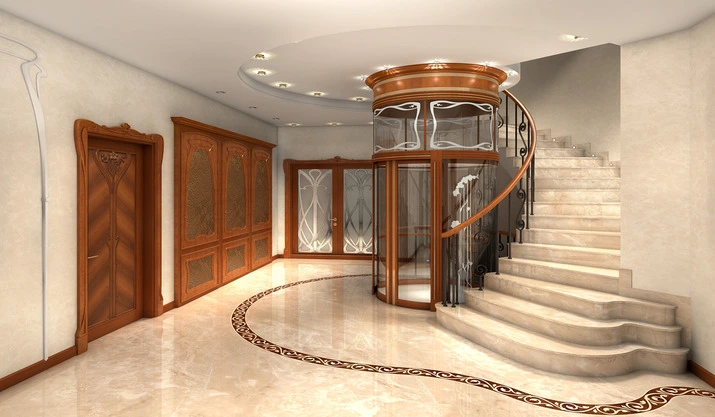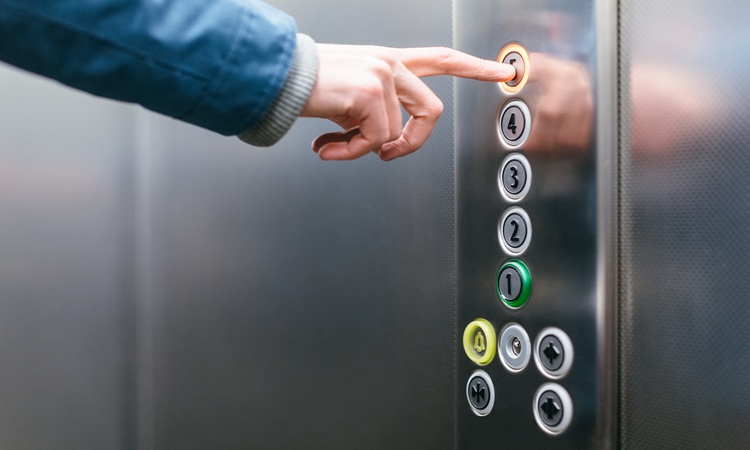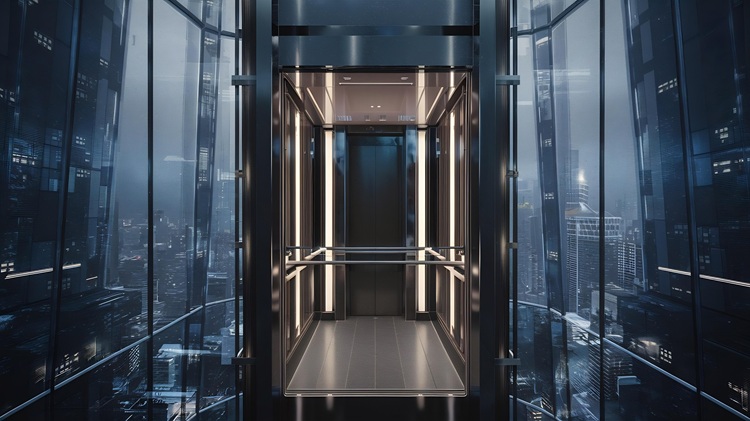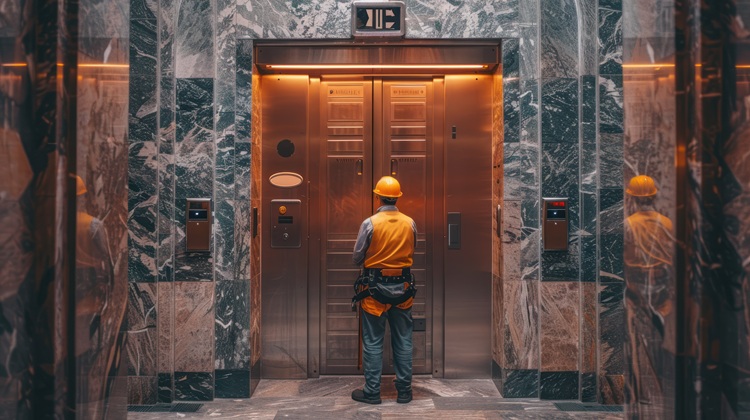Exploring the Different Types of Lifts for Homes: Choosing the Best Option for Your Home
Post Date : Jul 11, 2023
When it comes to choosing the best type of elevator for your home, exploring the different types of lifts available is essential. There are various options to consider when it comes to home lifts. These include hydraulic lifts, traction lifts, pneumatic lifts, wheelchair lifts, and stairlifts. Hydraulic lifts use fluid pressure to move the elevator car, while traction lifts utilize cables and counterweights. Pneumatic lifts operate based on air pressure differentials, making them a popular choice for contemporary homes. Wheelchair lifts provide accessibility for individuals with mobility challenges, and stairlifts offer a convenient solution for navigating stairs. By understanding the characteristics and benefits of each type, you can make an informed decision and choose the best lift option for your home.
Types Of Lifts For Homes
1. Hydraulic Lifts
There are various types of lifts available for homes, and one of the most preferred options is hydraulic lifts. These lifts utilize a hydraulic system to raise the elevator car, making them a cost-effective and beneficial choice. Hydraulic lifts are particularly suitable for residential settings due to their smooth and quiet operation, providing a comfortable and noise-free ride experience. They are ideal for homes with multiple levels, efficiently transporting individuals between a few floors.
Hydraulic lifts offer several advantages, such as their affordability and favorable features. They are especially suitable for low-rise buildings, where the travel distance is not extensive. Despite requiring a separate machine room to house the hydraulic equipment, these lifts are still popular among homeowners. However, it's important to note that hydraulic lifts have limitations in terms of travel distance and may not be the best option for tall residential buildings or those with numerous floors.
To summarize, hydraulic lifts are widely chosen for home elevators due to their smooth operation, cost-effectiveness, and overall performance. They are a practical choice for low-rise buildings and offer a comfortable ride experience, making them a popular option for many homeowners.
2. Traction Lifts
When it comes to lifts for homes, there are several types available, each with its own advantages and considerations. One popular option is traction lifts, also known as electric lifts, which utilize steel ropes and a counterweight system to enable smooth vertical movement within the elevator car. Traction lifts are commonly found in high-rise buildings, but they can also be installed in residential properties, making them a versatile choice.
Traction lifts offer numerous benefits, making them a preferred option for many homeowners. Their efficiency and energy-saving features make them practical and cost-effective. They are capable of accommodating taller buildings, ensuring convenient access to multiple floors. Furthermore, traction lifts provide a comfortable ride experience, ensuring the satisfaction of users.
However, it's important to consider a few drawbacks associated with traction lifts for home installation. These lifts typically require a machine room, which might require additional space within your residence. Additionally, traction lifts tend to be more expensive compared to other types, such as hydraulic lifts, which is an important factor to consider when planning your budget.
In conclusion, traction lifts are a viable and favorable choice for homeowners seeking to install an elevator in their homes. With their efficiency, ability to handle taller buildings, and smooth ride quality, they meet the needs of many individuals. However, it's essential to consider the requirement for a machine room and the relatively higher cost before making a final decision.
3. Vacuum Lifts
When it comes residential lifts or elevators, there are several types available, offering a range of features to meet different needs. One popular option is the vacuum lift, also referred to as a pneumatic lift or vacuum elevator. These lifts utilize changes in air pressure to facilitate smooth and efficient movement within the elevator car. With their self-supporting design, vacuum lifts are an ideal choice for homes with limited space, as they eliminate the need for a separate machine room. Their sleek and compact construction allows for easy installation in various areas of the house.
While vacuum lifts offer many advantages, it's essential to consider their limitations as well. Due to their design, they typically have a limited weight capacity, which may restrict their ability to transport heavy items or accommodate multiple individuals simultaneously. Additionally, when compared to other types of elevators, the size options for vacuum lifts may be somewhat more restricted. Budget is another aspect to keep in mind, as vacuum lifts tend to be relatively more expensive than traditional elevators.
In conclusion, vacuum lifts provide a contemporary and space-saving solution for residential elevators. Their convenient installation process and lack of a machine room make them an appealing choice for homeowners looking to incorporate an elevator into their living space. It's important to carefully evaluate the weight capacity and size restrictions, along with budget considerations, to determine the best type of lift for your home.
4. Stairlifts
When it comes to home mobility solutions, there are a variety of lifts that can be installed to accommodate different needs. One popular option is the stairlift, which is specifically designed to assist individuals with mobility challenges when navigating stairs. Stairlifts are equipped with a chair or platform that smoothly moves along a rail mounted on the staircase. They are highly versatile and can be easily installed on both curved and straight staircases. Stairlifts are known for their affordability and ease of installation. However, it's important to note that they primarily offer vertical mobility and are limited to stairs.
If you are looking for the best type of elevator for your home, it is worth considering options beyond stairlifts. Residential elevators provide a more comprehensive mobility solution, allowing individuals to move between different levels of their homes with convenience and ease. Unlike stairlifts, residential elevators are not restricted to stairs and provide both vertical and horizontal mobility. These elevators come in different configurations, such as hydraulic, pneumatic, or traction-driven systems, enabling homeowners to choose the most suitable one based on their specific requirements.
In summary, while stairlifts are a practical choice for addressing mobility issues related to stairs, residential elevators offer a broader range of movement options within a home. It is crucial to assess your specific needs and consult with professionals to determine the most appropriate type of lift for your home.
5. Platform Lifts
When it comes to enhancing accessibility and convenience in homes, there are several types of lifts to choose from. One of the most popular options is the platform lift, also known as a wheelchair lift or vertical platform lift. These lifts are specifically designed to facilitate the smooth transportation of individuals in wheelchairs or those who rely on mobility aids, enabling them to move between different levels within their homes easily.
Platform lifts offer numerous advantages, making them an excellent choice for homeowners. They provide a safe and reliable means of vertical movement, particularly benefiting wheelchair users. Additionally, these lifts can be customized to meet specific requirements, ensuring optimal functionality and comfort for the users. Whether it's for indoor or outdoor installation, platform lifts offer flexibility according to the homeowner's preference and available space.
It's important to consider some limitations of platform lifts as well. One drawback is the space they require for installation, which may necessitate modifications to the existing structure. Additionally, platform lifts often have weight restrictions, making them unsuitable for transporting exceptionally heavy objects.
To summarize, platform lifts are a highly sought-after option for enhancing accessibility in homes, especially for wheelchair users and individuals with mobility challenges. With their customizable features and flexibility in installation, these lifts offer versatility. However, homeowners should carefully assess the available space and weight requirements before deciding on this type of lift.
Conclusion
When it comes to selecting the best lift for your home, considering factors like available space, budget, mobility requirements, and aesthetic preferences is crucial. In Delhi, one of the best manufacturers known for their high-quality elevators is Polo Elevators. With their expertise and experience, Polo Elevators offers a range of reliable and efficient elevator solutions tailored to meet individual needs. Consulting with Polo Elevators, a professional elevator installer, can provide expert guidance and ensure that you make an informed decision that suits your specific requirements. They can offer valuable insights and assist you in choosing the right elevator that combines functionality, safety, and aesthetics for your home.






